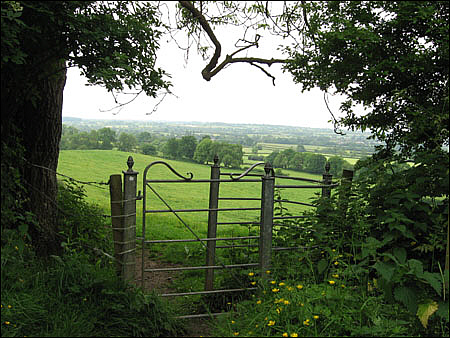
When we set off to walk the Cotswold Way recently, we were exploring new territory in a type of countryside that was unfamiliar to us. Here are a few jottings, but this post owes far more to the photographs taken by my wife than to my words.
Our lives have been spent mainly in the Highlands of Scotland and North Wales, although I was brought up in West Sussex at a time when that still beautiful county was truly rural, rather than a dormitory for London and other urban areas. So you could say that our natural habitat is the mountains and moorlands that are typical of Britain’s Celtic fringes, and we have walked thousands of miles in such areas, both at home and when we travel abroad.
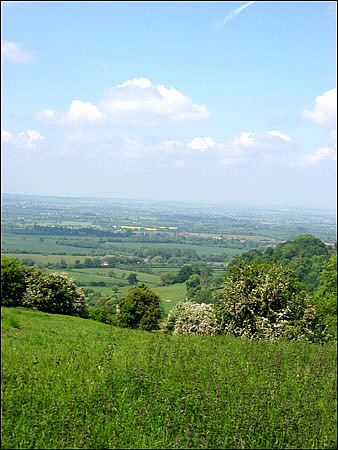
The Cotswolds could hardly be more different; perhaps the quintessence of the English lowland landscape, entirely free of the rawness that is so characteristic of upland areas where the violent hand of erosion is apparent wherever one turns. During the nine days that it took us to cover the hundred odd miles from Chipping Camden to Bath, we saw this spectacular part of the world in perfect late spring weather, with the May Blossom still at it’s best, new leaves fresh and green on the trees after a hard winter, and wild flowers everywhere.
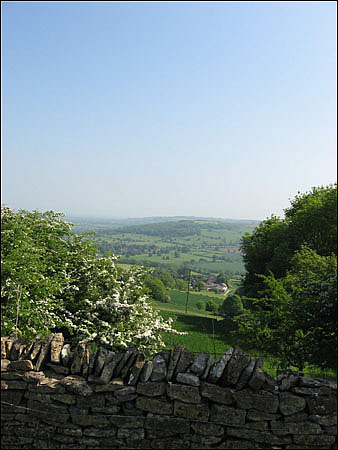
This is a landscape that, since it’s bare frame was sculpted by nature at the end of the last ice age, has been clothed by man, and what glorious attire several thousand years of ruthless exploitation has created. I have used the word ‘exploitation’ carefully here, for in considering such places that are now treasured for their beauty and tranquillity it is essential to remember that aesthetics played no part in the way they came into being. This is a landscape that predates any concern about ‘the environment’, tourism, or recreation, and although such areas are often spoken of in terms of natural beauty, this is misguided too. The hand of man is everywhere, in the neat fields separated by hedges that exist only because they are necessary for agriculture, in the well tended woodlands, in the floras that have been allowed to thrive because they are beneficial – or at least harmless – and the absence of those flora that are not.
The Cotswolds provide rich well-drained soils on their lower slopes combined, in the past, with areas of open grazing on the higher ground, ideal for sheep. Much of the uplands now grows crops too, although sheep are to be seen here and there in pastures and where areas of common land have survived.
During ages when agriculture had only two essential purposes – the provision of food and the means of making clothes – such productive land has been highly prized. This has been the case in the Cotswolds for at least 5000 years. The landscape owes its character to countless generations of farmers who were all too aware that only successful cultivation could protect them from destitution and starvation. In our time, when food and raw materials can be sourced from any part of the world, all that has changed.
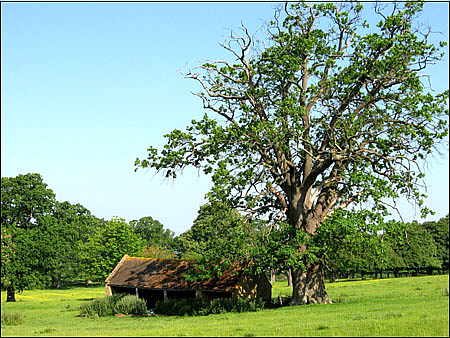
Only in the 17th and 18th centuries did large landowners begin to make attempts to beautify the areas around their mansions by creating parks; idealised landscapes set out by the likes of Capability Brown where agriculture took second place. But although these are a joy as one walks through them, with their vast trees set in undulating grassland providing ever-changing vistas, they are a very small part of the whole.
The Cotswold Way follows the tops of the wolds* wherever possible, but with excursions down to the edges of the broad vales of Evesham and Gloucester. It is tempting to say that these rather tame uplands are mere molehills compared to the kind of country we are used to walking in, but although this is true it belies the vast panoramas that they provide, particularly in the early stages of the journey. The outlook to the northwest over an untroubled rural landscape seems almost limitless, and one gazes at it in endless fascination and wonders that so much rural beauty can have been preserved in a heavily industrialised nation.
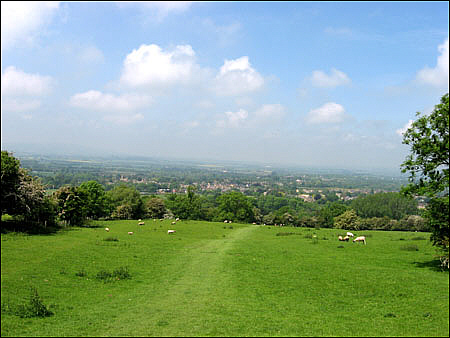
From the heights around Broadway Tower the eye scans thirty miles across the Vale of Evesham to the blue outline of the Malvern Hills beyond Worcester, and in clear weather onwards to the Welsh Marches, and even the rugged mountains far across the border in Wales. No one who has witnessed these panoramas can be in any doubt that much of our landscape is still rural, even if the population is not. Nor can one fail to marvel at such beauty existing in an age when most people live in urban or suburban areas. But for how much longer will this continue to be the case?
Along the Way, we stayed in pubs and Bed and Breakfasts, our only real interest after the day’s walking being some beer, food, a good book, and finally a glimpse of the television weather forecast to reassure us that the fine weather would continue. One evening I caught the regional news while waiting for the forecast and heard that protest groups were trying to stop one of the major energy companies installing wind measurement towers in the Vale of Evesham in preparation for planning applications to build wind farms. This was the very landscape that we had been so entranced by for the previous couple of days. After the first recoil at the thought that such desecration of a place of great beauty could even be contemplated, my thoughts turned to the Malvern Hills, an ever present distant blue line as we trudged along, which overlook the Vale of Evesham from the north-west, and I thought, not for the first time, about their association with Edward Elgar.
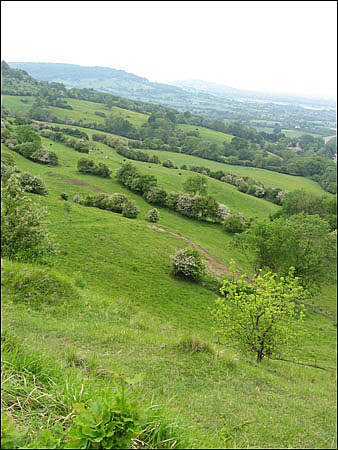
As a child and young man, this most English of composers lived just outside Worcester on the edge of the Malvern Hills. Although he is best remembered for the rousing, but now unfashionably, Pomp and Circumstance March No1 with its chauvinistic finale, Land of Hope and Glory, this is quite untypical of the main body of his work. Elgar was, above all, a pastoral composer, and his deep love of the Worcestershire countryside and the Malvern Hills, countryside that he loved and knew so well, imbues just about everything else he wrote. He was a great walker and cyclist throughout his life and never more content than when free to roam the byways, lanes, and paths of his native county. To put it in the usual trite terms, it was from this that he drew his inspiration.
It is impossible to fully appreciate Elgar’s violin or cello concertos, the first symphony, or countless other lesser works without recognising the extent to which the wonders of this beautiful landscape contributed to his creative life. Its importance to him is well illustrated by an incident shortly before he died.
During Elgar’s last illness, an old friend from his youth in Worcestershire visited him. As the man was leaving, Elgar called him back to his bedside and said, ‘After I am gone, if one day you are walking in the Malvern Hills on a beautiful summer morning, and hear someone in the distance whistling this tune’, and he quietly whistled the opening theme from his cello concerto, ‘don’t be surprised, it will only be me.’ It would seem that Elgar, a devout catholic, made little distinction between the magnificence of Heaven and the Malvern Hills.
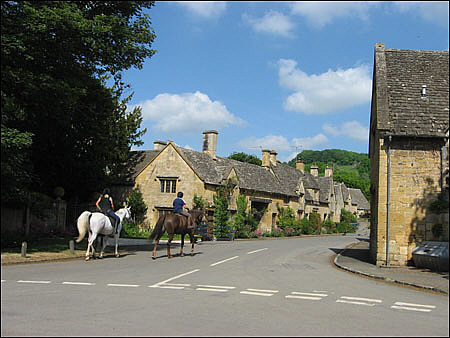
The association between unspoiled countryside and the creative process is so ingrained in our culture that it needs no explanation. By industrialising such landscapes with wind turbines, we do far more than just commit acts of pointless vandalism. We stifle the ability of future generations to see their surroundings in terms that are not entirely anthropocentric. Although the Cotswold landscapes are breathtakingly beautiful, that beauty is not derived form nature alone, nor entirely from the works of man, but from a unity of the two that is enduring, glorious, and reassuring.
It would seem that we are already breeding generations who think that it does not matter if such resources are impaired. I recently heard a spokesperson for the British Wind Energy Association say in an interview that people would get used to the fact that the countryside ‘will change slightly’ as more and more wind farms are built. This is no slight change, it is a radical alteration in out relationship with our surroundings. It is not just the visual impact that wind turbines can have in places like the Vale of Evesham. This is troubling enough, but the change in our psyche that that allows them to be built is far more so. For many years it has been understood that certain landscapes are immensely valuable assets that should be preserved because they are irreplaceable. Now this thinking seems to have been discarded without any consideration of the consequences.
WG Hoskins says in the introduction to the 1974 edition of his incomparable Making of the English Landscape:
Many parts of the English landscape remain just as our forefathers left them a long time ago. It is to these quiet solitudes … that we can still gratefully turn for refreshment and sanctuary from noise and meaningless movement.
As noise and meaningless movement becomes an ever-larger part of most people’s lives, so the preservation of the countryside in places like the Cotswolds and the Vale of Evesham becomes ever more important. We would not stand by and watch our great gothic cathedrals, or the ancient castles that still remain, modernised and put to new industrial uses, so why are we so complacent about what is happening to the remaining examples of unspoiled countryside that are equally part of our heritage and culture?
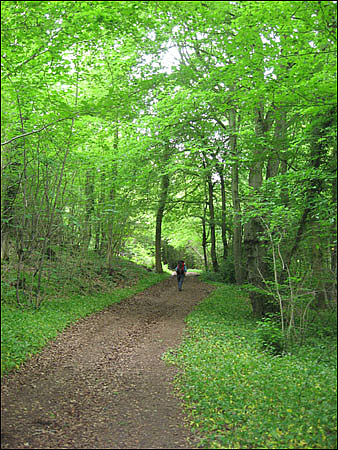
Perhaps the greatest hope for the Cotswolds lies with the people who live there. All the locals that we stopped to talk to along the way, and there were many, seemed immensely proud of their beautiful landscape, and glad that people like us were coming to enjoy it in the best possible way; on foot following the winding paths through the woods and fields. A surprising number of them seemed to have walked the Cotswold Way themselves, and the impression I got was that they will be unlikely to let anyone despoil their heritage without a fight.
* A piece of high, open uncultivated land or moor.

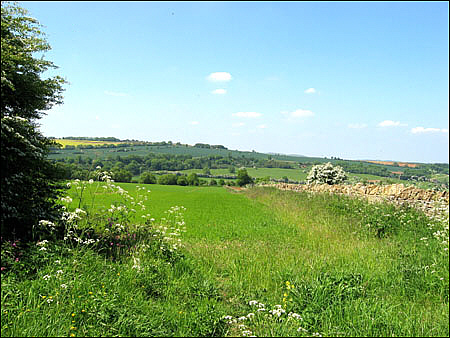
Re electric cars in particular and “green” technology in general, I’ll repeat something I mentioned here (NS thread) last month.
The BBC’s Costing the Earth programme on 20th May (here) was instructive. It seems that most “green” technologies, and especially electric cars, low energy light bulbs and windmills, depend entirely on rare earth metals (REMs) – (they’re rare because their oxides are rarely found in sufficient concentrations to allow for commercial mining and purification). Yet there are serious suggestions (link) that they might not be available to the West from as early as 2012. Apparently China has a monopoly of REMs and will need all it has (a dwindling resource anyway) to cope with its own increasing demand. (Also see this, this and this.) Moreover, supplies of lithium (see fourth link above), also essential for “green” technology (especially electric car batteries), may also be under threat.
Could Peak REM/Lithium a more serious problem even than the dreaded Peak Oil?
It gets worse. We’re told that the mining of REMs can itself cause severe environmental damage – so perhaps that electric car (efficient or not) is not so environmentally friendly after all: as is pointed out in the article mentioned above (second link),
So thanks to the BBC I have learned that, as wind-turbines and electric cars depend on scarce and depleting commodities that are controlled by a single supplier and the production of which causes great harm to the environment, they are hardly renewable, sustainable – or (er) green.
Hmm – maybe, as nuclear energy is so unpopular, the only solution is Ol’ King Coal after all. Or back to the Stone Age.
“Replacing the batteries every 5-6 years is not only a major expense, but represents an awful lot of CO2 and pollution”
What is the lifetime, currently, of a fossil fuel powered car? 10 years? If EV cars are no better, then battery change would be required once per lifetime.
However, I would say we should be looking to extend the lifetime of all products not just cars and their power sources. The economy of the western world does seem to rely on product ‘consumption’ , which I always find to be strange word. Is it really necessary for us to ‘consume’ cars, TV’s, fridges, in quite the way we do?
So, yes, we should be developing EV batteries which do last longer that the 5 or 6 years you have mentioned, if that is in fact a true figure, but we could make a long list of ‘consumer’ goods which should be similarly improved.
Again, I would say that if you think that the “overall lifetime impact of an electric car is [going to be] pretty similar to a petrol or diesel one”, then make a rational case, with references, rather than just a baseless assertion.
These vehicles have been around for at least ten years now. They aren’t a pipe dream. The figures are there to prove or disprove all claims and counterclaims.
http://www.youtube.com/watch?v=4xul-H4HsMw
Peter, I stand by the figures for diesel engine efficiency, it’s my area of expertise so I would be careful where you go here. Of course all engines have a best point and a worst point but electronics control the variations very well. And much can still be done to improve efficiency further. Ceramic engines with no cooling water have been run and tested, and turbo compounding to recover waste heat is used in some applications. Then there is the hyper-bar engine for rail and other industrial use that greatly improves power density and economy, and the list goes on.
Ironically it was regulations around removing harmful emissions that has stifled certain developments. Perhaps when control technology improves further some of these advanced technologies will be reintroduced.
I do believe that regulators have gone far enough with reducing harmful emissions which on the US 2010 model year heavy duty diesel engines almost qualifies them as zero emission engines, unless of course you consider CO2 harmful to health which it is not. More freedom needs to be given to manufacturers so that they can reduce fuel burn, which I believe is now more important than reducing almost zero emissions to a little bit closer to Zero.
All this is doing is allowing regulators to say they have reduced say particulates by 50% where in fact they have reduced nothing to nothing. The Law of diminishing returns; which wastes development resources for little gain to humanity.
I think most can survive to 20, but many get scrapped before then. Our family has two Mazdas, one 18 and one 20 years old, so that’s 3 changes of batteries each, had they been electric!
I’ve just sold a 32-year old motorbike – my remaining one is a mere 10 years old, but has plenty of life left in it.
When I was a kid in the 1970s I used to watch Tomorrow’s World (for non-Brits, a long-running TV programme about the scientific and technological wonders just around the corner) and was of the opinion that in a few years’ time we would all be driving electric cars (in appearance, perhaps like this bubble car!) The future hasn’t turned out quite that way.
In a way, an EV would be perfect for the sort of driving I do – basically shuttling between home, work and Tesco – plenty of stops and starts, traffic jams and few occasions to go very fast or very far. I might think about getting one if the following criteria were met:
1) Price. The Nissan Leaf will go on sale for £23,350 (including VAT and minus £5000 government incentive). That’s way out of my price range (not that I’d ever buy a new car anyway) so how much would used ones go for? If used Leafs (Leaves?) could be picked up for £2,000 or £3,000 I might be interested.
2) Reliability. I don’t know enough about EVs to say much, but it would need to be as reliable as the petrol car I’m driving at the moment (used Toyota Corolla.)
3) Running costs. Probably much cheaper than petrol or diesel, that might be an incentive.
4) Performance/range. Not an issue with day-to-day use (commute, shopping etc.) Although I’m wondering how the batteries would fare during a cold winter like the last one.
Hmm. More research needed, maybe.
Re the life span of a petrol car, our best car so far was a third-hand Nissan Sunny first registered in 1992, bought by us in 1999 and which lasted until January 2009 – so about 17 years. Could have been longer if I’d had the knowledge or inclination to replace the gearbox, but decided to say goodbye to it and get a (slightly) newer car instead…
Just found this web site for used green vehicles and there’s a used EV for £2,999. It’s an Aixam Mega City – takes 5 hours to recharge but a full recharge costs under £1. The range is about £40 – £60 miles. Not bad! Where’s the catch?
Peter Geany,
Yes the diesel engine is the most efficient of the internal combustion engines. However it is nowhere near as efficient as an electric motor.
If you are an expert on the subject you might like to explain the principle of the diesel electric locomotive which uses a diesel engine, to generate electricity rather than power the wheels directly.
In my non – expert opinion, that can only be desirable if the conversion efficiency from electricity to mechanical drive is very high. What do you think?
Alex Cull,
Perhaps you can explain why, if the UK is such a basket case, economically, everyone seems to be driving around in fairly new cars.
On my last visit there I borrowed a car, a quite reasonable condition VW Polo with only about 80k on the cloack, from my son, which had a “Y” at the end of the registration number. I was told that being seen driving this around would place me at a severe social disadvantage?
Was he right?
Peter, Re trains 90% of the UK’s Diesel passenger trains use a hydraulic drive train. (similar trains are in Aus) It is only the HST’s that use larger engines driving DC generators. These have a traction engine at each end of the train. There are some newer HST’s that use an under floor engine for each carriage again with hydraulic drives. Goods trains use large diesel electric drives as they are easier to package and its important for each wheel of the train to be driven to maximise traction, a requirement that is easier to meet with diesel electric drive.
I’m not a train expert but my understanding is the later HST’s have superior performance. This could be due to a better power to weight ratio or any other number of reasons. The latter trains can also make use of derivatives of truck engines and are therefore able to conform to the very strict emissions regulations that industrial engines don’t meet. This presupposes that governments force this regulation on railways which they don’t, another area and example when the technology is in place, commercially available, proven and not used. And these engines would in the main use less fuel as well. So much for switching to rail to be green.
One last point and I not trying to be pedantic but it is worth bearing in mind the terminology used in authoritative papers when you read comparisons. An internal combustion engine is not a motor. When talking about the efficiency of an electric motor, or a hydraulic motor in the context of what it is driving you have to factor in the generation side of the equation. This is always ignored so that the message is one sided. An engine is both generator and motor in one, and is why it reins supreme.
Alex Cull If you removed the tax from petrol and diesel, and just paid the Vat as with electric power, how far would £1 of fuel take you? A lot further than 50miles. It’s worth thinking about what the government will do to replace all that tax collected on fuel if we switched to electric power. Anyway it won’t happen in our lifetime or our children.
Peter Geany,
Still haven’t found any references to back up your assertions?
You obviously aren’t going to be swayed from your opinion that EVs are just as expensive to run as fossil fueled vehicles by facts and figures.
Railways, at least in Australia and Europe, are mainly electrified. They do use some diesel fuel of course, and they don’t pay excise duty on it either. But, if your argument were correct, and the relative costs of electricity and fossil fuels were comparable, there would be no need for the capital expenditure of overhead power lines. Maybe you would like to explain why they are there?
Peter M, re people still driving new-ish cars here, I think part of the answer (until recently!) could perhaps be easy credit. There will also always be some people buying brand-new cars, either because they are relatively rich, and they simply can. Or because they are status-conscious or because owning a certain type of car was always their dream; in other words, a less-than rational decision. But for the rest, I think there will be more of a make-do-and-mend culture, going forward, as belts are tightened and credit is hard/impossible to get; people may well hang on to their old bangers out of economic necessity.
Re the Y-reg Polo, that would not look out of place in my corner of London, where many of my neighbours have been driving the same beaten-up old cars since the 1990s. A lot would depend on the neighbourhood or the social stratum. Mind you, Y reg is only 2001, which in my book is fairly new!
Peter Geany, true I hadn’t thought of that, i.e. taking petrol duty into account; will have to sit down and do the maths. I suppose from the point of view of naked self-interest, though, it might make sense to be an EV early adopter, and cash in on all the subsidies, allowances, discounts and freebies available (e.g. no congestion charge, cheap parking and road tax, etc.) Mind you it’s also worth bearing in mind that we’re indirectly paying for all those green subsidies etc., out of our taxes! No free lunch.. :o(
Not really an option for cars, though, is it? It’s batteries that are the problem.
When I was in short trousers, I lived near Derby, where the local public transport system used trolley-buses, a sort of tram/bus hybrid that used overhead power lines (600V DC, I think). It worked extremely well, but was phased out in favour of diesel buses, although they plied the same routes. I often wondered why, as passengers liked the electric ones, which had very snappy acceleration, so other road users quite liked them too!
PeterM Quote me. Others do. I’m on safe ground. I’m an engineer and just pointing out reality. I have no axle to grind other than trying to banish nonsense from the discussion.
Engineers look at all the options and chose the best fit.
Why are trains electrified? The answer was simple; it reduced emissions from the train. As I have pointed out it put them “offsite” where they were not visible. And remember in many instances electricity replaced steam. In the UK many electric trains run the third rail rather than overhead to reduce costs. This option also reduces performance. Today it becomes harder and harder to justify the enormous capital costs of electric trains with overhead lines. Only where high fares and high passenger density are guaranteed will new projects go ahead. The same rules apply to buses, and is why most tram systems were removed.
An explanation as to why electric powered machines feel spritely in passenger service. An electric motor, as with a steam engine produces maximum torque at 0 rpm. Hence no need for a clutch and the ease of direct drive. An internal combustion engine however needs to be rotating and has a narrow power band and hence the need for a clutch and gear train. This may cause issues during acceleration but more often than not the cruise can be perfectly optimised for best economy.
Peter At no point am I saying we should not have any electric trains, or that there is no place for other electric vehicles, I’m merely trying to point out that the comparisons and costings are not apples for apples, or even apples and oranges, but more like apples and steak, and often prey on the fact that in our modern service oriented world most people initially at least can be hoodwinked rather easily.
JamesP ,
Yes, batteries have been just about the only problem with EVs. That is still the case, too, but they aren’t an unsuperable problem and progress is being made.
Peter Geany,
Its just nonsense to claim that electrification of the railways has been motivated by a desire to reduce emissions. Except maybe for the London Underground!
It’s been dictated by economics. Electricity, (I don’t care if its supplied via a third rail or overhead), and even when the railways don’t have the benefit of being able to use off peak supplies, has always been cheaper than diesel fuel for pulling trains. As fossil fuels become scarcer the price difference will increase.
It will increase for road vehicles too. That is why the next 20 years or will see a transition from fossil fuels to electricity for road transport.
PeterM
Not in mine or your lifetimes it won’t. This is not a dogma stance but one of practicality. Within 10 years we will stop calling oil and gas a fossil fuel because they are probably not in the way that coal is. We have much to learn and understand about all manner of things to do with our world, especially where oil and gas come from. We could if pressed make our internal combustion engines move twice the weight twice as far in the next 25 years. I have seen an enormous change in my life time, and we are only at the beginning of what we can do with electronic controls.
And when we as an electorate have finished chucking out stupid politicians, a process well underway, we will let practical people get back down to the job of putting our would back on the right track.
Back on the subject of the countryside, just spent the day on the south coast near Eastbourne and Beachy Head – glorious sunshine, beautiful views and not a wind turbine in sight. There are some in the area, probably – one example that I know of is npower’s monster wind farm over at Little Cheyne Court on Romney Marsh but we didn’t go that far east.
And there’s more UK hot weather to come, according to the BBC – cheery article here, with no mention of climate doom. Yes, they have “Sunstroke” as a sub-heading, but look further down. “Asda said it has sold 165,000 bikinis in recent days, up 47% on this time last year.” And that can’t be bad, can it.
These two separate articles illustrate the problenms the UK faces. I certainly agree with the first one, that we should not rely on foreign fuel
http://www.telegraph.co.uk/earth/greenpolitics/7860450/Greg-Barker-climate-change-minister-We-cannot-go-on-relying-on-foreign-fuel.html
However we still need grown up sources of power which can’t be provided at present by renewables;
http://www.telegraph.co.uk/earth/energy/hydro_electricenergy/7858960/Power-rationed-on-green-island-Eigg-after-mild-weather-causes-drought.html
If we can’t use coal and no one is prepared to invest in nuclear it beats me how we are going to avoid the fate of Eigg.
Tonyb
TonyB, the story of Eigg is a rather sobering one, and I agree shows that renewables (as the various technologies stand right now) are not up to the task of providing power for even a small community’s modest needs during the sort of variability the British Isles have normally from year to year. It’s ironical that this should happen in Scotland, where hopes have been high for a massive takeup of renewables such as wind and tidal power generators. It just isn’t enough. Given plenty of time and breakthroughs in areas like nanotechnology, solar has some promise, I think – but it won’t help Eigg much right now, or the government to hit its looming carbon targets.
Alex:
The lady who fronts the Eigg renewable energy scheme was interviewed on the Today programme this morning. She said that they had the solution in hand; installing more solar. Nothing to worry about at all.
The presenter didn’t ask what this would cost, or what the cost per unit of electricity is on Eigg once you strip out subsidies. I’ve seen figures for Germany showing that the government there has to guarantee generators prices up to nine times the going rate in order to get solar up and running.
Tonyn
The words ‘Eigg’ and ‘solar’ don’t fall naturally into the same sentence. As you say, this venture will be hugely subsidised by non Eiggians.
Tonyb
Sunny side up? :-)
The Guardian (surprise) has a different take on the Eigg story – here. It seems the island has “bagged the prestigious overall UK gold Ashden award for energy efficiency”. So there – you nasty deniers. Although it seems 10% of the islanders electricity supply comes from non-renewable sources – and, even so, their use of electricity is capped. Hmm: maybe not quite so good after all.
Robin
For ‘capped’ read ‘rationed.’
I don’t think any of us here on this blog are against renewables. What concerns me is this touching belief that rationed renewables will be perfectly adequate to satisfy the needs of a population who live in a modern environment in one of the worlds largest economies and most crowded countries.
This lack of continuity of supply- as well as the cost involved- should be of concern to us all as there does not seem to be a plan B.
tonyb
Woohoo – time to celebrate winning the award!
How about a nice cup of tea and some toast – uh-oh, we’ll need to switch off the washing machine first. And can you turn off your stereo? Thanks. Kids, stop watching TV, we’ll need that switched off as well. And the lights…
Now it’s completely dark, can’t see to pour the tea. Could you switch the kitchen light on again? Thanks.
Oh rats… now we’ve exceeded our allowance.
Cold water and a biscuit, anyone?
“installing more solar”
So they’ll be alright as long as they don’t get any windless nights…